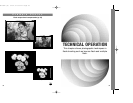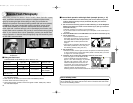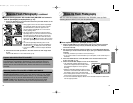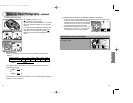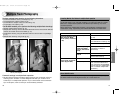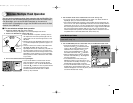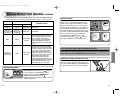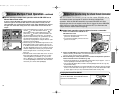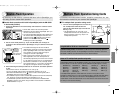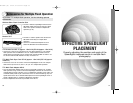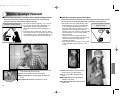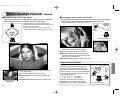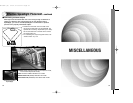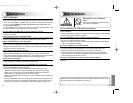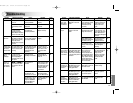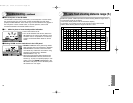
5554
Double-Flash Operation
By attaching the SB-50DX to a camera that has a built-in Speedlight, you
can easily perform double-flash operation.
•Double-flash operation with built-in Speedlight (with the SB-50DX
in horizontal position)
1. Attach the SB-50DX to the camera body and release the camera’s built-in
Speedlight.
• Set the flash head in the horizontal position.
• Release the camera’s built-in Speedlight. (See your
camera’s instruction manual).
• The camera Speedlight detecting lever detects that
the camera’s built-in Speedlight is activated. The
LCD panel shows indicating the horizontal
position of the SB-50DX flash head and
indicating the built-in Speedlight.
2. Set the zoom-head position (p. 16) on the SB-50DX. (For the angle of
coverage of the camera’s built-in Speedlight, see your camera’s instruction
manual).
Angle of
coverage of
the built-in
Speedlight
Angle of coverage
of the SB-50DX
• The usable focal length of the lens should be
determined by the angle coverage of the camera’s
built-in Speedlight. With a zoom lens, select the
zoom position so that it is within the angle of
coverage of the built-in Speedlight.
• With a CPU lens and cameras of Group I, II or
Nikon Digital SLR, the zoom-head position is
automatically adjusted by the Power Zoom function
(p. 16). When the Power Zoom is not activated with
camera/lens combination in use, manually set the
zoom-head position (p. 17) so that it corresponds to
the angle of coverage of the lens’ focal length.
3. Shoot following the same procedure as in normal TTL auto flash operation
(p. 20).
• Set the flash mode on the SB-50DX to TTL auto (p. 18).
• For the combined guide number in double-flash operation, see p. 33.
• With F65-series/N65-series set to AUTO mode or Vari-Program, built-in
Speedlight does not fire even when it is up.
• For available exposure mode in double-flash operation with the F70-series/N70,
see "Exposure mode with the Nikon F70-series/N70" on p. 42.
• In double-flash operation with the Nikon F70-series/N70 or PRONEA 600i/
PRONEA 6i camera, see "When using the Nikon F70-series/N70 or PRONEA
600i/PRONEA 6i" on p. 42.
Multiple Flash Operation Using Cords
For detailed information about function, operation, connection, etc., see
the instruction manual for your camera and Speedlight.
•TTL multiple flash operation using cords
1. Turn off all the Speedlights and connect the
TTL multiple flash terminals with the
optional TTL Multi-Flash Sync Cord SC-18/
SC-19 (p. 56)
• The SB-50DX does not come with a TTL
multiple flash terminal. Use the optional TTL
Remote Cord SC-17/SC-24 (p. 56) for TTL
multiple flash operation.
Slave
flash unit
Subject
Using SB-50DX or SB-23 as a slave flash unit
When using the SB-50DX or SB-23 as a slave flash unit in TTL multiple flash
operation using cords, the SB-50DX or SB-23 may turn off during operation
since the standby function of the Speedlight cannot be canceled. Use of the
SB-50DX or SB-23 as a slave flash unit is not recommended.
Notes on TTL multiple flash operation using cords
Take care that the combined total of the coefficients (numbers shown in
parentheses below) for all Speedlights used at any one time does not exceed 20
at 20°C (68°F) or 13 at 40°C (104°F). (One coefficient equals approx. 70 mA.)
SB-80DX (1) SB-50DX (1) SB-30 (1) SB-29s (1) SB-29 (1)
SB-28 (1) SB-28DX (1) SB-27 (1) SB-26 (1) SB-25 (1)
SB-24 (1) SB-23 (4) SB-22 (6) SB-22s (6) SB-21 (4)
SB-20 (9) SB-17 (4) SB-16 (4) SB-15 (4) SB-14 (1)
SB-11 (1) SB-140 (1)
In multiple flash operation, if the electronic current in the synchro circuit
exceeds a certain level, you man not be able to take a second shot after taking
the first one. In this case, turn off each of the Speedlights once or turn the
master flash unit off and disconnect it from the camera. This resets the circuits
so that you can resume shooting.
Technical Operation
Master
flash unit
SB-50DX (E) 02.12.9 2:33 PM Page 54



